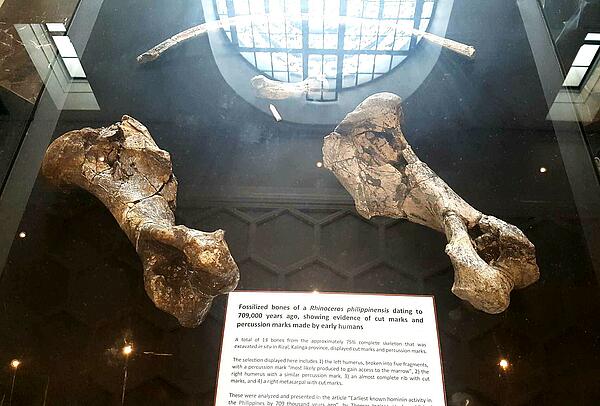The animal remains of Rizal
While there are many theories of how humans came to inhabit the Philippines - including the Core Population Theory, the Out of Taiwan Model and the Wave Migration Theory - they all seem to agree that there was no trace of human activity in the area before around 67,000 years ago, at the very earliest. However, the discovery of rhinoceros that was butchered with tools 709,000 years ago cast doubt on this idea.
The discovery, which was unveiled in the journal Nature in 2018, revealed that stone tools had been found in the Philippines that predated all previous estimates of the arrival of modern humans. Found in the Kaliga province on the island of Luzon, the tools were seemingly abandoned on a river floodplain beside the butchered carcass of a rhinoceros.
While it’s not certain who used the tools, it is clear that they were used to butcher the carcass. Specifically, researchers found that two of the rhino’s limb bones were smashed, while cut marks were left on the animal’s ribs and ankles by stone blades. In total, 13 of the rhino’s bones displayed marks. These findings make it unlikely that the carcass wasn’t harvested by an early hominin.

Aside from the marks left behind by tools, the age of the animal’s remains make the find particularly significant. A technique known as electron-spin resonance was used, which can date material that may otherwise by damaged by radiocarbon dating. Scientists found that the carved bones are likely to be between 631,000 and 777,000 years old, with best estimates suggesting they’re 709,000. This has a huge impact on previous estimates, surpassing them by more than 600,000 years.
As well as the rhinoceros, researchers found a total of 57 stone tools and more than 400 bones of animals, including monitor lizards, Philippines brown deer, turtles and stegodons - an extinct animal related to mammoths and elephants.
Thomas Ingicco, associate professor at the Museum National d’Histoire Naturelle and study author commented on the importance of the find shortly after its publication:
"First is the very old age of this site which multiplies by ten the formerly known early presence of Hominins in the Philippines. Second is the evidence for colonization of an ever-isolated island in The Philippines by the early Middle Pleistocene and therefore most likely by a hominin species other than Homo sapiens."
Sadly, there is no evidence to suggest who these early humans could have been, but the find opened up a new area of research that continues today.
MLA Citation/Reference
"The animal remains of Rizal". HistoryLearning.com. 2026. Web.
